When it comes to exotic pet ownership in the United States, reptiles represent some of the most fascinating and unique companions available to enthusiasts. While many exotic species are restricted due to conservation concerns, invasive potential, or safety issues, there remains an impressive variety of legal exotic reptiles that can make rewarding pets for properly prepared owners. These cold-blooded creatures offer distinctive care challenges and rewards unlike traditional pets, often becoming lifelong companions due to their impressive longevity. Whether you’re drawn to their prehistoric appearance, unique behaviors, or simply their quiet nature, this guide will introduce you to ten exotic reptiles that are generally legal to own across most U.S. states, though always check your specific state, county, and city regulations before bringing any exotic pet home.
Understanding Exotic Reptile Ownership

Before diving into specific species, it’s important to understand what “exotic” and “legal” actually mean in the context of reptile ownership. Exotic reptiles are generally considered species that aren’t native to the United States or that aren’t commonly domesticated. Legality varies significantly across different jurisdictions, with federal regulations being just the starting point. States like Florida, California, and Hawaii have particularly strict laws regarding exotic reptile ownership due to concerns about potential environmental impact if these animals escape or are released. Always research your local laws, obtain any necessary permits, and consider the ethical implications of exotic pet ownership. Responsible ownership includes preparing for the animal’s entire lifespan, which for many reptiles can exceed 20 years, and ensuring you can provide proper housing, diet, temperature gradients, and veterinary care.
1. Bearded Dragon (Pogona vitticeps)

Bearded dragons have earned their place as one of the most popular exotic reptiles in the American pet trade due to their docile nature and relatively straightforward care requirements. Native to Australia, these lizards typically grow to 18-24 inches in length and can live 10-15 years with proper care, making them a significant commitment. Their popularity stems partly from their expressive behaviors, including head bobbing, arm waving, and the distinctive beard display that gives them their name – when threatened or during mating displays, they puff out their throat pouch and darken it dramatically. Bearded dragons are omnivorous, requiring a balanced diet of insects, leafy greens, and vegetables, which helps make their nutrition management more engaging for owners. Their calm demeanor and tolerance for handling make them particularly suitable for reptile enthusiasts who desire interaction with their pets, though they still require appropriate UVB lighting, temperature gradients, and spacious enclosures to thrive.
2. Leopard Gecko (Eublepharis macularius)
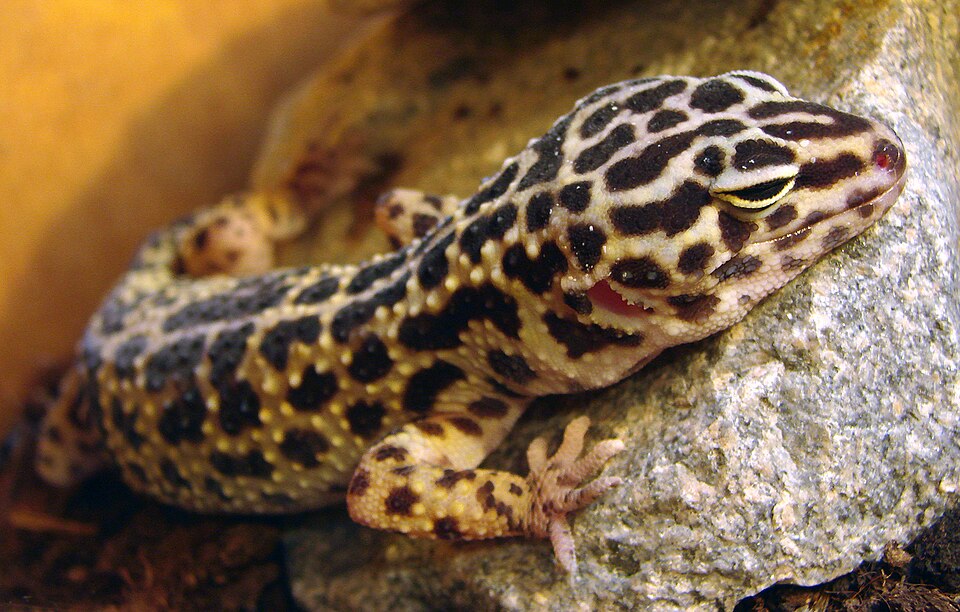
Leopard geckos stand out among exotic reptiles for their manageable size, striking patterns, and beginner-friendly care requirements. Native to the arid regions of Afghanistan, Pakistan, and parts of India, these terrestrial geckos typically reach 8-10 inches in length and can live 15-20 years in captivity, offering a long-term companionship opportunity for dedicated owners. Unlike many other gecko species, leopard geckos lack the specialized toe pads that allow for climbing vertical surfaces, making them primarily ground-dwellers that require horizontal space rather than tall enclosures. Their most distinctive physical characteristic is their naturally fat tail, which stores nutrients and water – a desert adaptation that helps them survive periods of food scarcity in the wild. Leopard geckos are insectivorous, thriving on a diet of crickets, mealworms, and other commercially available insects, and unlike many reptiles, they don’t require UVB lighting, though they do need proper heat sources to regulate their body temperature.
3. Crested Gecko (Correlophus ciliatus)

Crested geckos have experienced a remarkable journey in the pet trade, having been thought extinct until their rediscovery in 1994 on the island of New Caledonia. These arboreal geckos are known for their distinctive crest of soft, spiky scales that runs from eye to eye and continues down their back, giving them an almost prehistoric appearance. Their specialized toe pads allow them to climb glass and other smooth surfaces with ease, making secure enclosures essential to prevent escapes. One of the most appealing aspects of crested gecko care is their omnivorous diet – they can thrive on commercially available powdered diets mixed with water, supplemented with occasional insects, making their nutrition management simpler than many other reptiles. Crested geckos display fascinating behaviors, including impressive jumping abilities and a defensive mechanism where they can drop their tails when threatened; however, unlike some gecko species, once lost, their tails do not regenerate, instead healing to form a small nub.
4. Ball Python (Python regius)
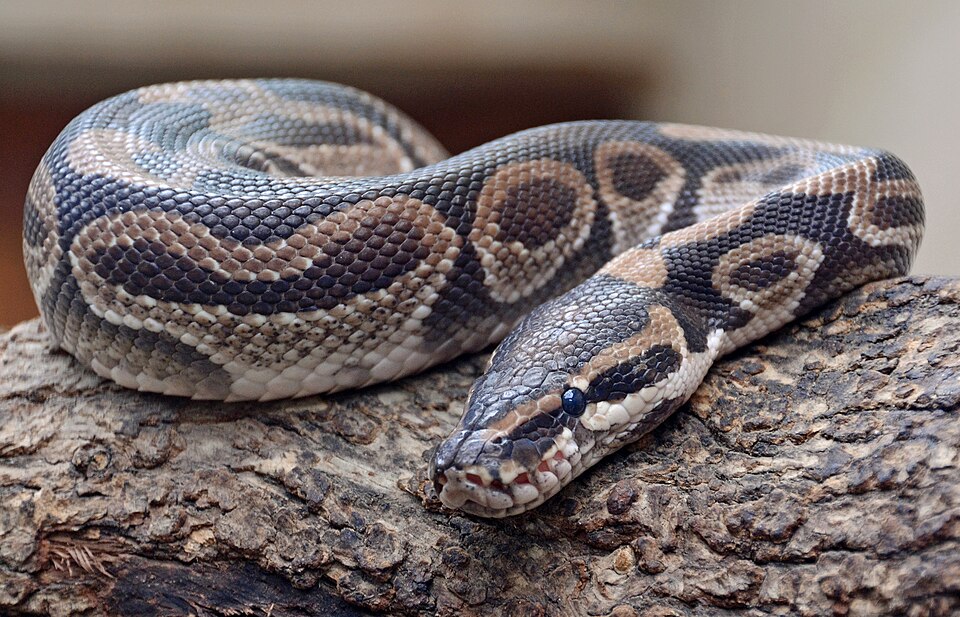
Ball pythons have earned their status as the most popular pet snake in the United States due to their manageable size, docile temperament, and stunning color variations. Native to West and Central Africa, these non-venomous constrictors typically reach 3-5 feet in length, making them substantially smaller than many other python species and appropriate for keepers with limited space. Their common name comes from their defensive behavior of curling into a tight ball with their head protected in the center when feeling threatened. The pet industry has developed hundreds of distinct color and pattern mutations (known as “morphs”), ranging from the wild-type pattern to dramatic variations like albino, piebald, and axanthic, allowing enthusiasts to select animals with unique appearances. Ball pythons are relatively low-maintenance regarding feeding, typically consuming pre-killed rodents every 1-2 weeks as adults, though some individuals can be finicky eaters, especially during seasonal changes. With proper care, these pythons commonly live 20-30 years in captivity, making them a long-term commitment that often becomes a cherished companion animal for dedicated keepers.
5. Corn Snake (Pantherophis guttatus)

Corn snakes have maintained consistent popularity in the reptile hobby due to their docile nature, reasonable size, and relatively simple care requirements, making them ideal for both beginners and experienced keepers. These North American colubrids typically reach 3-5 feet in length and display a stunning array of color variations in captivity, from the wild-type orange with red saddle markings to amelanistic (albino), anerythristic (lacking red pigment), and numerous pattern mutations like striped, motley, and tessera. Their natural habitat ranges throughout the southeastern and central United States, where they’re beneficial predators that help control rodent populations. Corn snakes are exceptional escape artists that can squeeze through remarkably small openings, requiring secure enclosures with carefully fitted lids and proper latching mechanisms. Their feeding response is typically strong and predictable, readily accepting appropriately-sized frozen-thawed mice, which makes them less problematic to feed than some other exotic reptiles. With proper care including appropriate temperature gradients, hide boxes, and regular handling, corn snakes routinely live 15-20 years in captivity, forming the basis for many keepers’ long-term fascination with reptile husbandry.
6. Blue-Tongued Skink (Tiliqua spp.)
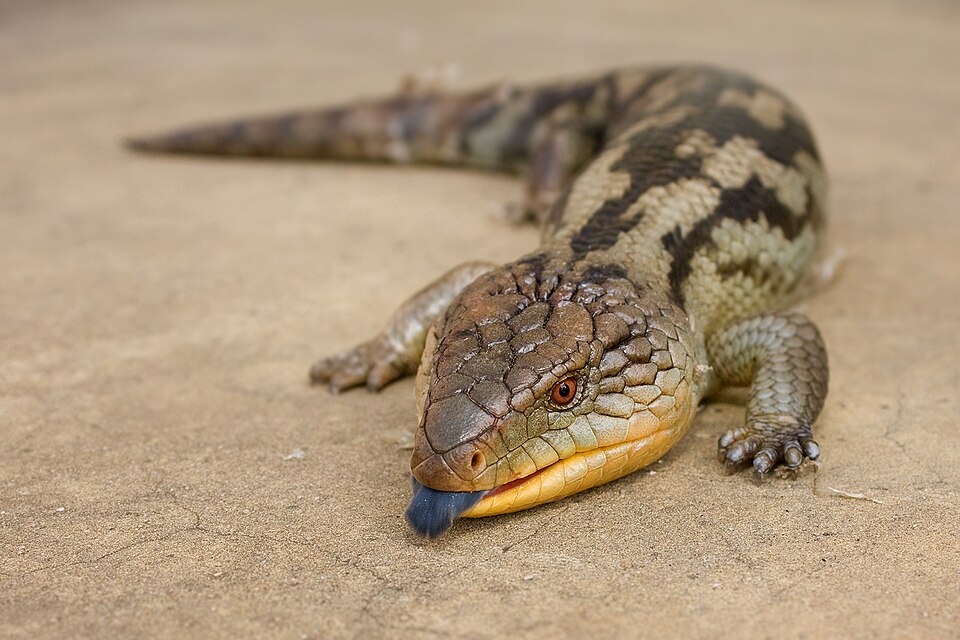
Blue-tongued skinks have gained popularity as exotic pets due to their distinctive appearance, docile temperament, and engaging behaviors that set them apart from many other reptiles. As their name suggests, these lizards possess a vibrant blue tongue that they display prominently when threatened, creating a startling visual contrast against their otherwise earth-toned bodies. Several species are available in the pet trade, with the Northern (Tiliqua scincoides intermedia) and Indonesian (Tiliqua gigas) being among the most common, each reaching approximately 18-24 inches in length when fully grown. Unlike many lizards that primarily eat insects, blue-tongued skinks are true omnivores that thrive on a varied diet including vegetables, fruits, protein sources like cooked eggs or lean ground turkey, and some commercial dog food, making their nutritional management more similar to feeding a dog than a typical reptile. Their stocky bodies, short legs, and personable demeanor give them an almost mammal-like quality that many keepers find endearing, while their intelligence allows them to recognize their caretakers and even respond to simple interactions over time.
7. Red-Footed Tortoise (Chelonoidis carbonarius)

Red-footed tortoises represent one of the most popular medium-sized tortoise species in the U.S. pet trade, appreciated for their striking appearance and relatively manageable care requirements compared to larger tortoise species. Native to South America, these tortoises display distinctive red or orange scales on their legs and head that contrast beautifully against their dark carapace (upper shell), which typically shows yellow patterning that varies between individuals. Unlike desert tortoises that require extremely low humidity, red-footed tortoises come from tropical environments and need moderate humidity levels, making them suitable for keepers in more humid regions of the United States. Their omnivorous diet includes a wide variety of dark leafy greens, vegetables, limited fruits, and occasional protein sources, offering an interesting nutritional management challenge for dedicated owners. Red-footed tortoises can live 50+ years with proper care, making them true lifetime companions that often become family heirlooms passed between generations; this longevity should be carefully considered before acquisition, as responsible ownership includes planning for the animal’s entire lifespan.
8. Russian Tortoise (Testudo horsfieldii)

Russian tortoises have become favorites in the exotic pet trade due to their small size, hardiness, and engaging personalities that make them accessible to a wide range of enthusiasts. Native to Central Asia’s arid regions, these compact tortoises typically reach only 8-10 inches in length, making them one of the smallest tortoise species commonly available to hobbyists and requiring substantially less space than larger species. Their distinctive physical characteristics include four toes on each front foot (compared to five in many other tortoise species) and a slightly flattened carapace that helps them navigate the rocky terrain of their natural habitat. Russian tortoises are primarily herbivores that thrive on a high-fiber, low-protein diet centered around leafy greens, grasses, and weeds, with commercial tortoise diets serving only as occasional supplements. Despite their small size, these tortoises can live 40+ years in captivity with proper care, representing a significant long-term commitment that spans generations of human caretakers, and they remain active and engaging throughout their lives, often recognizing their keepers and approaching them for interaction or food.
9. Uromastyx (Uromastyx spp.)

Uromastyx lizards, often called spiny-tailed lizards, offer reptile enthusiasts a fascinating alternative to more common pet lizards with their unique appearance and primarily herbivorous diet. Native to the desert regions across North Africa and the Middle East, these lizards possess a distinctive defensive adaptation in the form of a spiny tail that they can whip at predators when threatened, giving them their common name. Their colorful appearances vary dramatically between species and individuals, with some displaying vibrant oranges, reds, and yellows, particularly during breeding season or when properly exposed to UVB lighting. Unlike most popular pet lizards that require insect protein as a dietary staple, adult uromastyx thrive on a diet composed mostly of dark leafy greens, vegetables, and seeds, with only occasional insects, making them potentially more appealing to owners who prefer not to maintain feeder insect colonies. These desert specialists require intense heat and UVB exposure to properly digest their food and maintain health, with basking spots needing to reach 120-130°F, significantly hotter than most other pet reptiles require.
10. Kenyan Sand Boa (Eryx colubrinus).

Kenyan sand boas have carved out a niche in the exotic pet trade as one of the smallest boa species available, making them accessible to enthusiasts with space limitations or those seeking a less intimidating introduction to keeping boid snakes. Native to the arid regions of East Africa, these stout-bodied snakes typically reach only 18-24 inches for males and 24-30 inches for females, with females being noticeably thicker and heavier. Their most distinctive characteristic is their appearance and behavior – with small eyes positioned on top of their heads and a blunt, rounded snout, they’re perfectly adapted for their natural burrowing lifestyle, spending much of their time partially or completely submerged in substrate. Kenyan sand boas display several attractive color variations in captivity, including albino, anery (lacking red pigment), and stripe patterns, though even the wild-type pattern of orange-brown with darker blotches is quite attractive. These ambush predators have relatively simple care requirements, needing appropriate temperature gradients, a deep substrate for burrowing, and appropriately-sized rodent prey items offered every 7-14 days depending on the snake’s age and size.
Legal Considerations and Responsible Ownership

While the reptiles discussed in this article are generally legal throughout most of the United States, exotic pet ownership remains subject to a complex patchwork of regulations that vary dramatically between jurisdictions. Federal laws primarily focus on protected species and interstate commerce, while state, county, and even city ordinances may impose additional restrictions or permit requirements specific to certain species. States like Hawaii, California, and Florida maintain particularly stringent restrictions due to their vulnerable ecosystems and climates that could support invasive populations if exotic species escape or are released. Responsible ownership extends beyond mere legality, however, involving thorough research into each species’ specific needs, financial preparation for appropriate enclosures and veterinary care, and ethical sourcing from reputable breeders rather than wild-caught specimens. The reptile community has increasingly embraced captive breeding programs that reduce pressure on wild populations while producing animals better adapted to captivity, often with distinctive color morphs not found in nature.
Conclusion: Finding Your Ideal Exotic Reptile Companion

The world of legal exotic reptiles offers something for virtually every interested enthusiast, from manageable lizards with engaging personalities to striking snakes and long-lived tortoises that become multigenerational companions. The key to successful exotic reptile ownership lies in thorough research, careful species selection based on your lifestyle and experience level, and a commitment to providing species-appropriate care throughout the animal’s entire life. While this article highlights ten popular legal species, it represents just a small sampling of the remarkable diversity available within the reptile hobby. Before making any purchase, invest time in connecting with experienced keepers through reptile societies, expos, and online communities to gain firsthand insights into daily care requirements and challenges. Remember that responsible ownership includes having an emergency fund for veterinary care, researching exotic veterinarians in your area before acquisition, and never releasing unwanted pets into the wild. With proper preparation and commitment, an exotic reptile can become a fascinating, rewarding companion for many years to come.

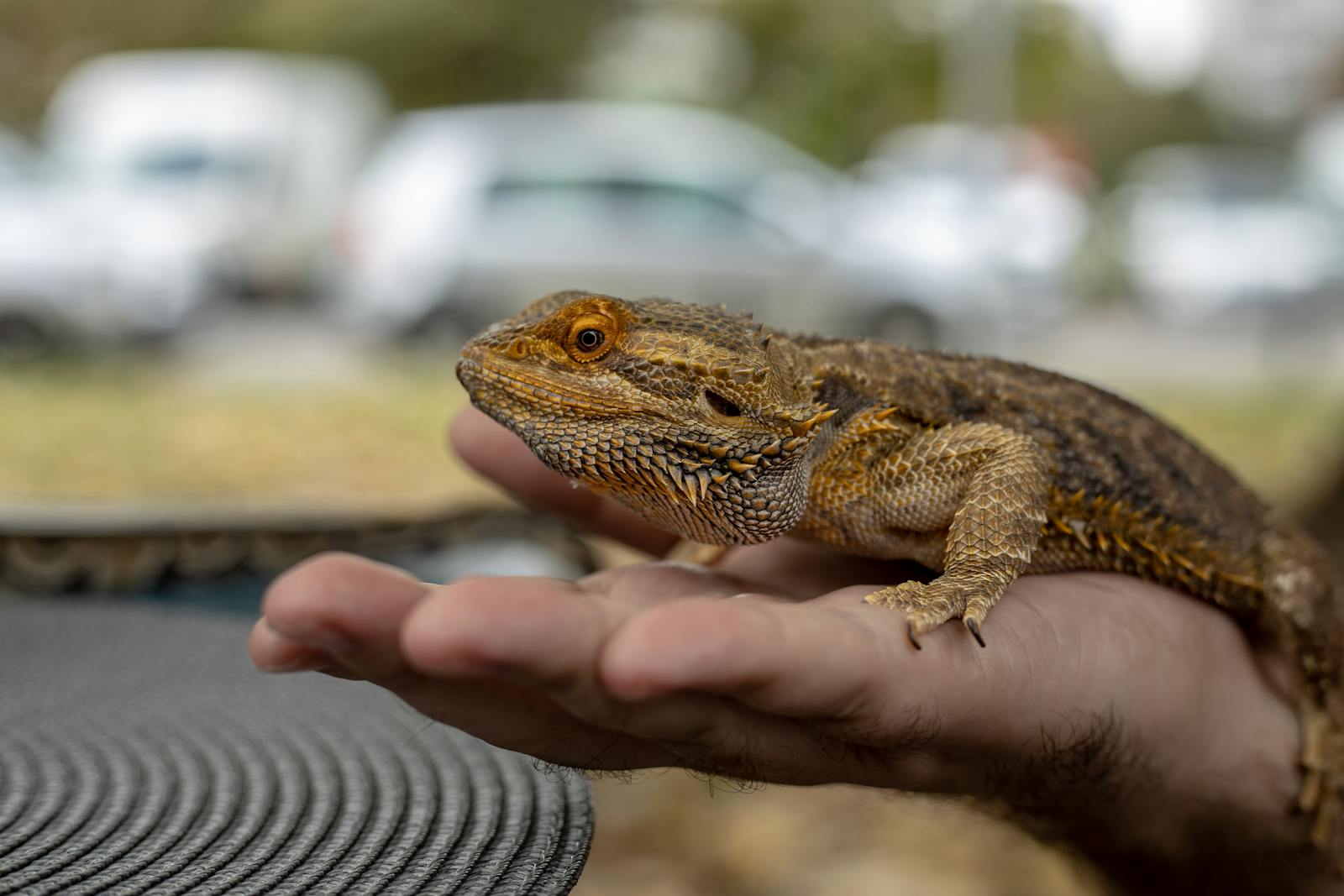

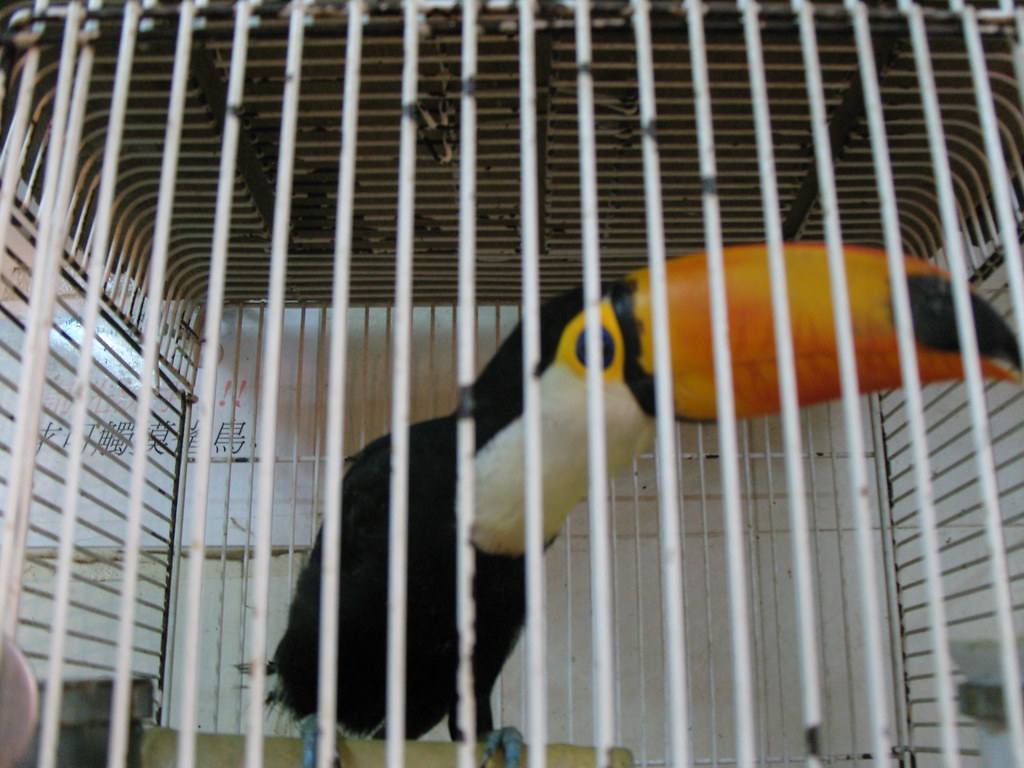
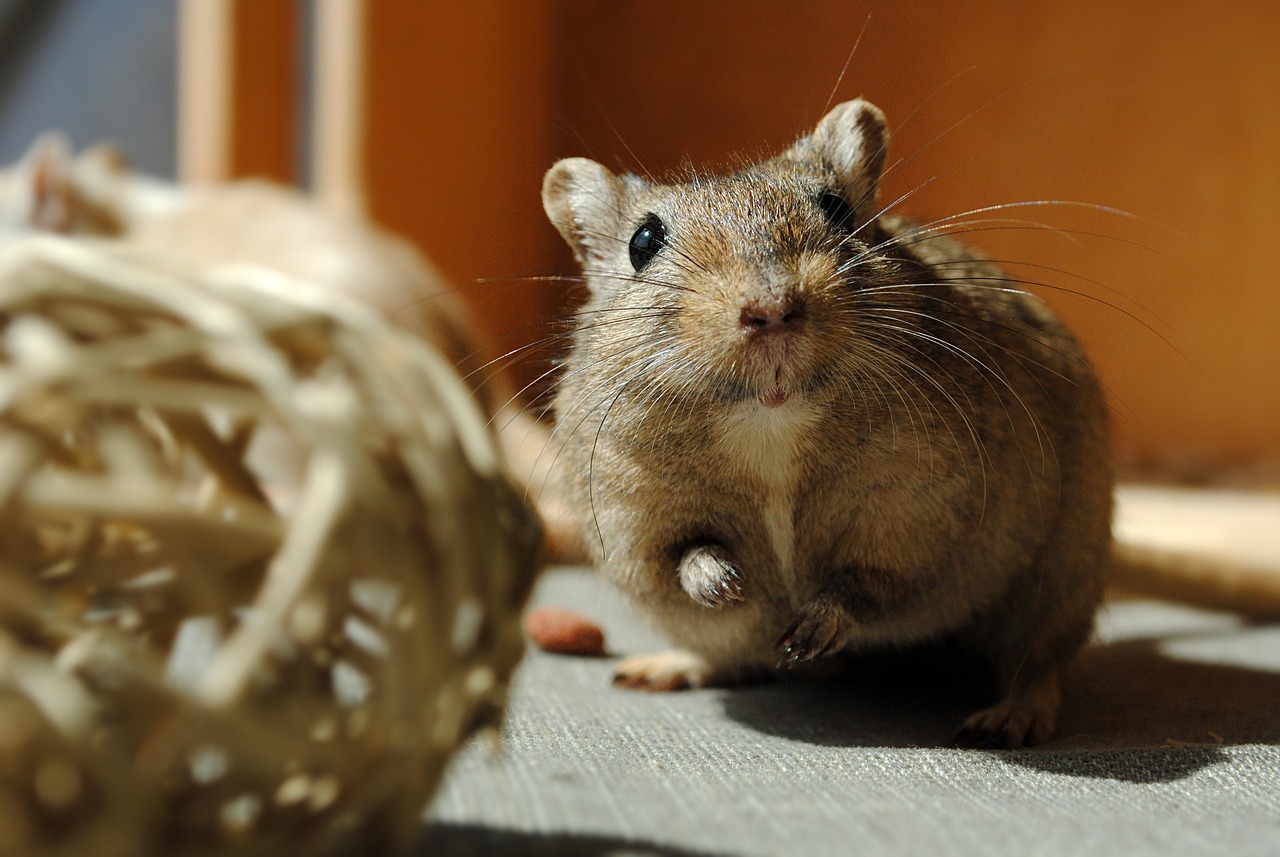
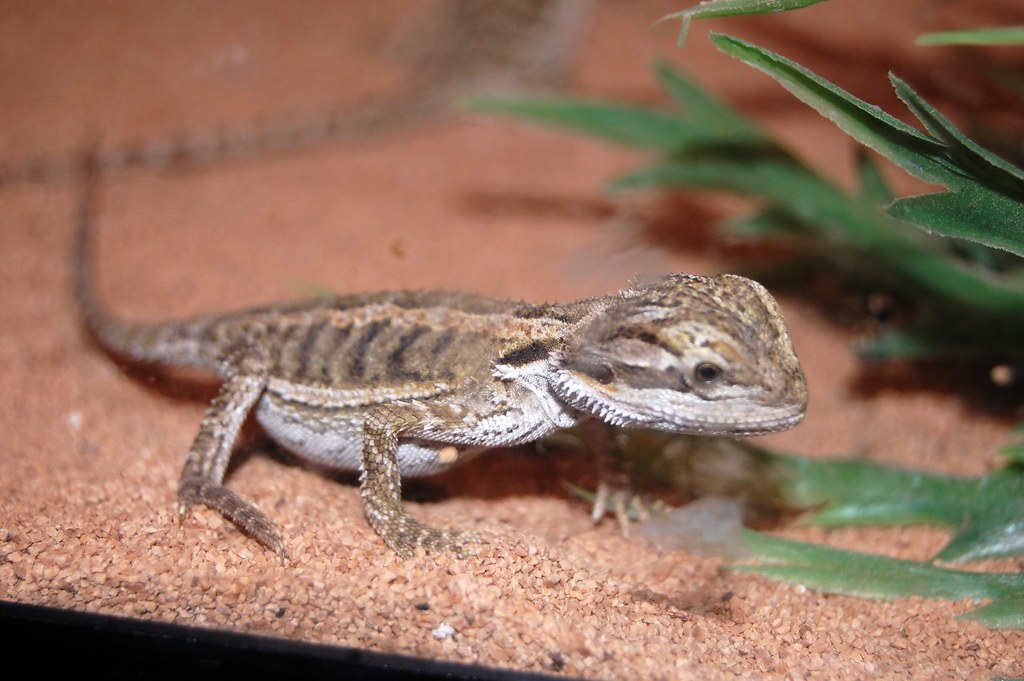
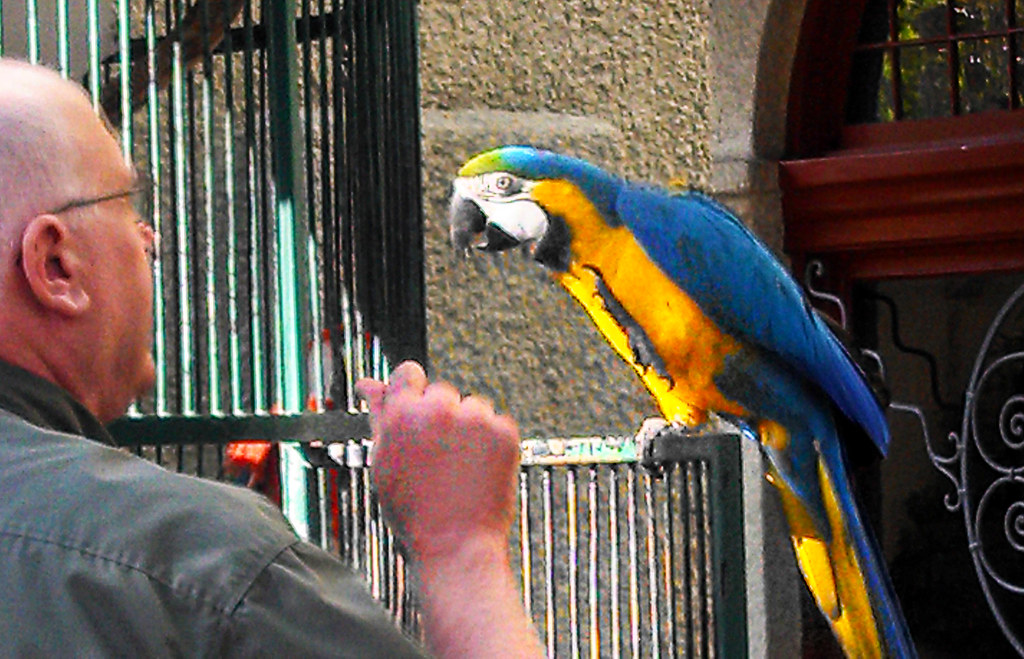
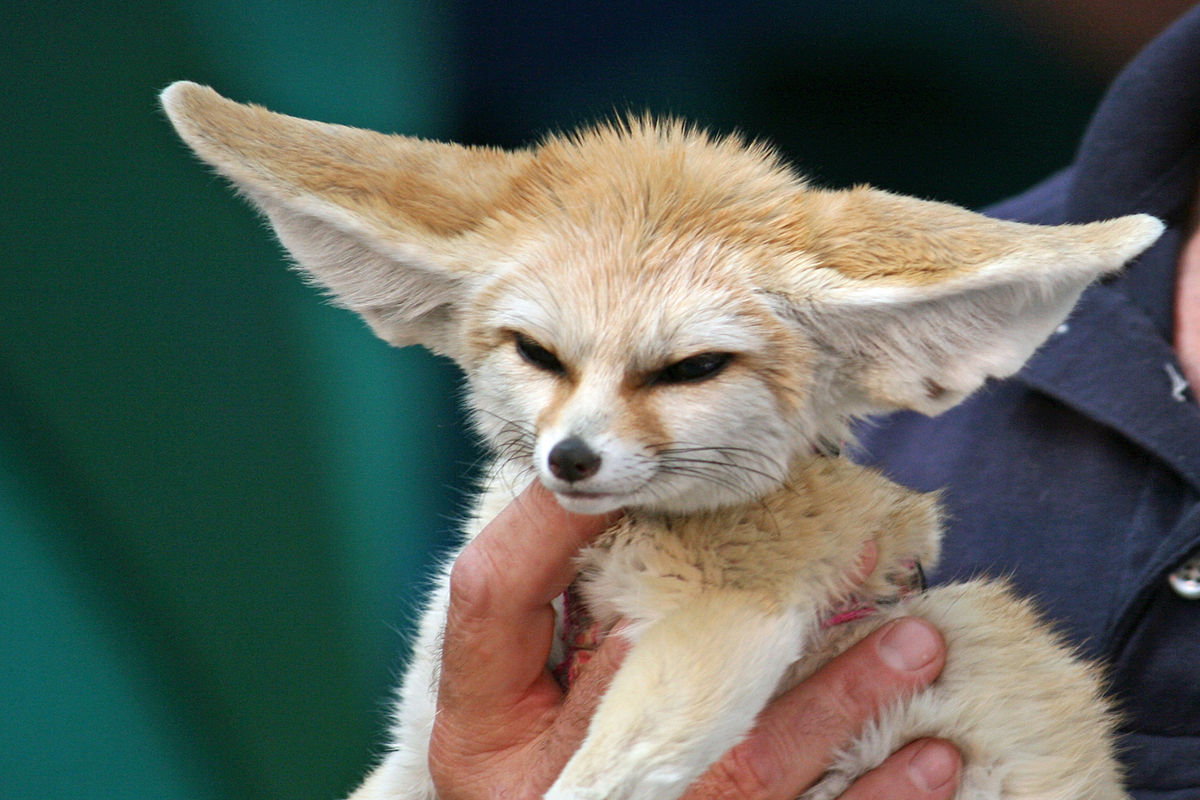
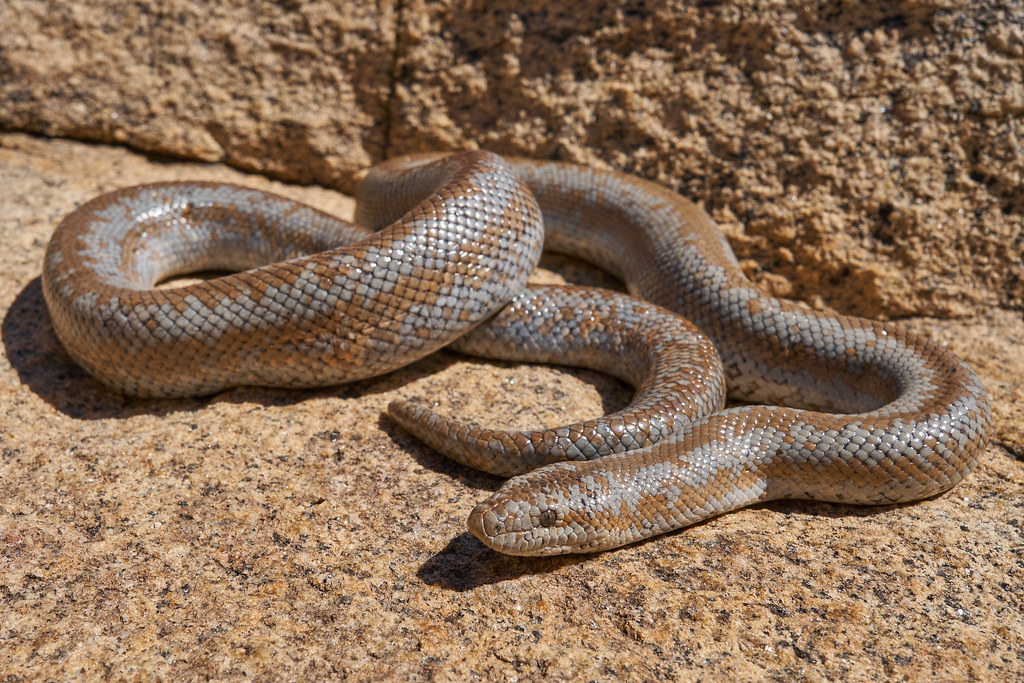
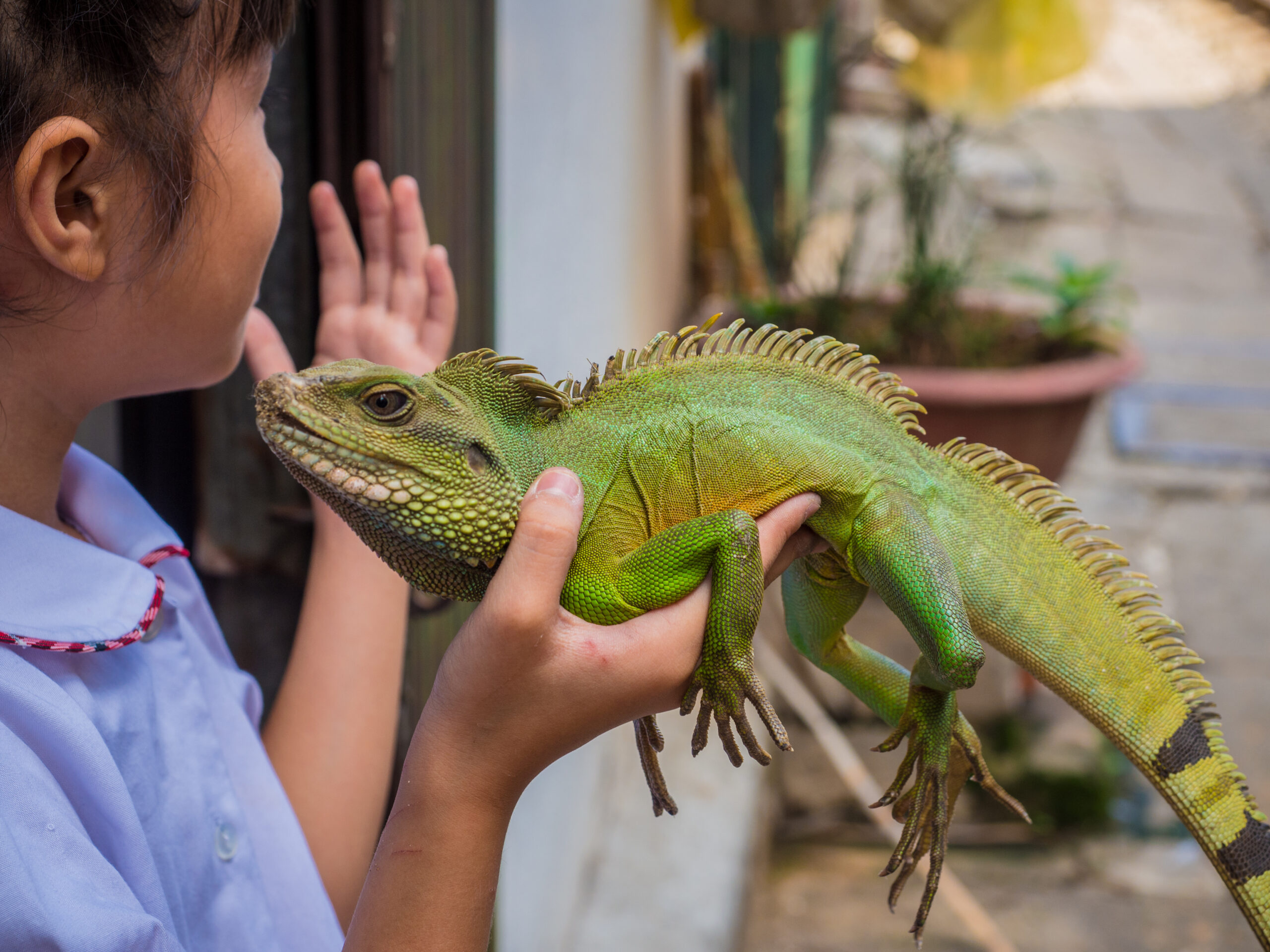





Leave a Reply